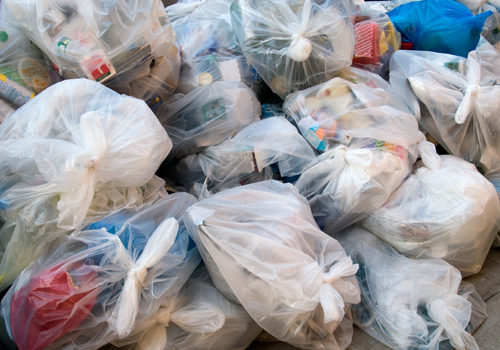Even though our mothers wouldn’t let us forget it years ago, it seems Americans need to be reminded that “There are starving children in Africa!” Only 60% of the food made in the United States ever gets eaten, according to a new report from the National Resources Defense Council (NRDC). Titled Wasted: How America is Losing Up to 40 Percent of Its Food from Farm To Fork to Landfill, the report estimates the economic value of the food we throw away annually at $165 billion.
“As a country, we’re essentially tossing every other piece of food that crosses our path—that’s money and precious resources down the drain,” said Dana Gunders, NRDC project scientist with the food and agriculture program. The report places this level of food waste in the context of rising food prices and drought in key agricultural areas. Findings were derived from analysis of government data and recent case studies on how food is wasted, and how much, at different points in the supply chain.
Beyond the startling overall amount of waste, the report found that the average family of four in America throws away an equivalent of $2,275 in food annually. If the amount of food wasted were reduced by 15%, it would be enough to feed 25 million Americans for a year. The report also found that there has been a 50% increase in U.S. food waste since the 1970s, making food waste the largest single component of solid waste in the nation’s landfills.
The report also points to the retail level as a major area of concern, before food ever reaches the home. It estimates that grocery stores and other retailers are losing up to $15 billion per year in unsold fruits and vegetables, or about half of the nationwide supply. One NRDC suggestion to cut down on this phenomenon is to reduce unnecessary overabundance in the produce displays that retailers put out, which inevitably leads to spoiled and wasted food.
Excessively large portions in restaurants and in homes, as well as uneaten leftovers, are another big part of the problem. The report notes that today’s portion sizes are often two to eight times larger than those recommended by the government.
A three-pronged approach to reducing food waste is necessary, says NRDC. The government needs to study the issue, retailers and related businesses need to streamline their operations, and consumers need to shop more wisely and plan better, including an awareness of when food will go bad. The report points to the aggressive stance Europe has taken on the issue as an example, with the European Parliament passing a resolution at the beginning of 2012 to cut food waste in half by the year 2020.
“No matter how sustainably our food is farmed, if it’s not being eaten, it is not a good use of resources,” Gunders said. “Fortunately, there are ways to tackle the food waste problem, and everyone can play a role.”
Published in WholeFoods Magazine, October 2012










